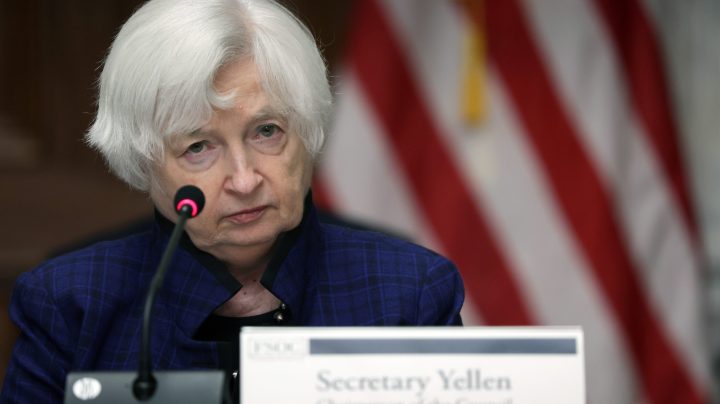
When will the U.S. run out of money? It’s tough to say.
When will the U.S. run out of money? It’s tough to say.

If Congress doesn’t raise the debt ceiling and allow the government to borrow more money, eventually it won’t be able to pay its bills.
So the big question is when do the government coffers run dry? How much time do President Joe Biden and House Speaker Kevin McCarthy have to hash out a deal? Turns out, it’s hard to figure out.
Treasury Secretary Janet Yellen has been crunching the numbers and said earlier this week that a default could happen “potentially as early as June 1.” There is a whole lot of wishy-washy language in that sentence.
On Wednesday, the Treasury secretary admitted that it’s hard to be precise about when a default could happen. But isn’t it a little disconcerting that we don’t know exactly when such a catastrophic event might land?
First of all, let’s try to give the government a break. It spends trillions of dollars every year on everything from Social Security and veterans benefits to defense contractors and desk chairs at the IRS. So at any given time, it’s hard to know exactly how much money it’s paying out.
“We’re talking about something like over 80 million checks that are transacted on a monthly basis,” said Bill Hoagland, senior vice president at the Bipartisan Policy Center. “It is simply impossible to be exact.”
That’s just what the government spends money on, he said. We also have to keep in mind all the different ways the government brings money in, noted Veronique de Rugy, senior research fellow at the Mercatus Center at George Mason University.
“Income tax, payroll tax — it’s all the many, many, many revenue sources that are flowing in to Treasury at any given day,” she said.
If that revenue doesn’t cover all the checks the government has to write, the government has a couple of cushions, said Marc Goldwein, senior policy director at the Committee for a Responsible Federal Budget.
“First, they hold cash, and secondly, they issue bonds — they issue debt to bring in more cash,” he said.
And that brings us to the Treasury’s problem today. We hit the debt limit in January, so the government can’t issue more bonds. As a result?
“We’re down to only the cash on hand and what we’re bringing in on a daily basis,” Goldwein said.
Right now, what we’re bringing in is especially hard to predict.
It’s been an unusual tax season, said Alex Arnon, director of business tax and economic analysis with the Penn Wharton Budget Model. For one, the stock market wasn’t so hot last year, so tax revenue on those investments fell by more than expected. The IRS also extended tax filing deadlines for people affected by severe weather, like the recent flooding on the West Coast.
“A huge number of taxpayers — especially almost all California taxpayers — they were not actually required to file in April,” Arnon said.
There is one glimmer of hope, he said: Corporate tax payments are due on June 15. “On the Treasury end, they’ll get a big influx of revenue, and they can use that to fund at least the next week or two.”
But Arnon added that it’s still unclear whether the government can make it to June 15 before running out of cash.
There’s a lot happening in the world. Through it all, Marketplace is here for you.
You rely on Marketplace to break down the world’s events and tell you how it affects you in a fact-based, approachable way. We rely on your financial support to keep making that possible.
Your donation today powers the independent journalism that you rely on. For just $5/month, you can help sustain Marketplace so we can keep reporting on the things that matter to you.












